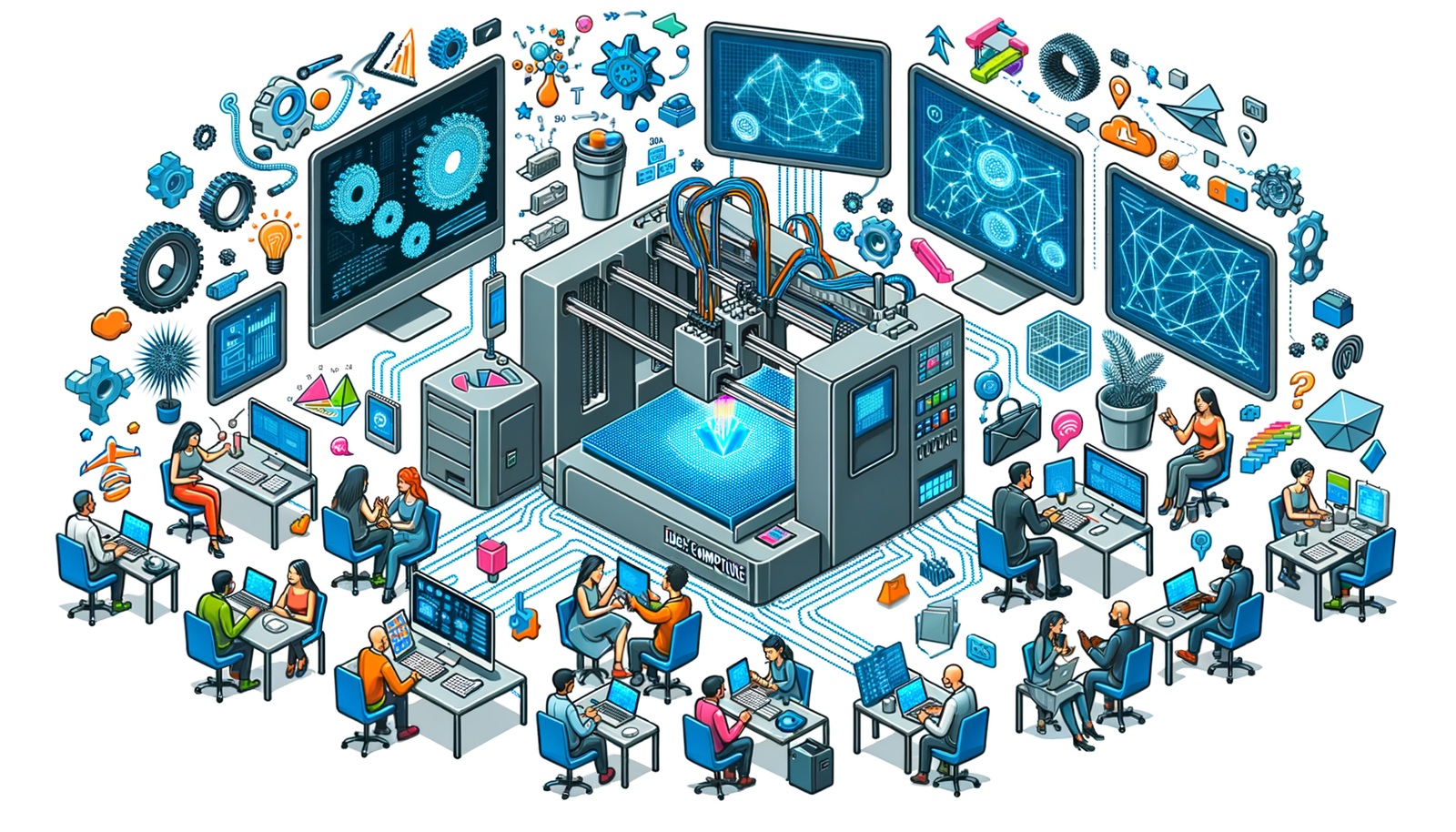Your Cart is Empty
Customer Testimonials
-
"Great customer service. The folks at Novedge were super helpful in navigating a somewhat complicated order including software upgrades and serial numbers in various stages of inactivity. They were friendly and helpful throughout the process.."
Ruben Ruckmark
"Quick & very helpful. We have been using Novedge for years and are very happy with their quick service when we need to make a purchase and excellent support resolving any issues."
Will Woodson
"Scott is the best. He reminds me about subscriptions dates, guides me in the correct direction for updates. He always responds promptly to me. He is literally the reason I continue to work with Novedge and will do so in the future."
Edward Mchugh
"Calvin Lok is “the man”. After my purchase of Sketchup 2021, he called me and provided step-by-step instructions to ease me through difficulties I was having with the setup of my new software."
Mike Borzage
Edge Computing: Revolutionizing Design Collaboration, Additive Manufacturing, and Remote Workflows
July 19, 2024 3 min read


Introduction to Edge Computing in Design
Edge computing represents a transformative approach to how data is handled, processed, and delivered from millions of devices around the globe. At its core, edge computing refers to the computation processes being performed closer to the data source, rather than relying solely on centralized data centers. This paradigm shift is particularly impactful across various industries, including the realms of design and architecture. With its foundational principles focusing on minimizing latency and conserving bandwidth, edge computing has begun to redefine the potentials for remote design work and collaborative efforts. Its promise lies in its ability to not only streamline traditional workflows but also to introduce new capabilities that were previously unattainable due to the limitations of conventional network architectures.
Enhancing Remote Collaboration through Edge Computing
The advent of remote work has brought to light several challenges within the design and architecture sphere, particularly those related to latency, data security, and the accessibility of powerful computing resources. These issues often culminate in bottlenecks that hamper the efficiency, and sometimes the feasibility, of remote collaboration on design projects.
- Latency can delay the delivery of critical data, slowing down decision-making processes.
- Data security concerns arise as information travels back and forth between remote locations and centralized servers.
- Access to computing resources is uneven, with participants in different locations having varying levels of computational power available.
Edge computing addresses these challenges head-on by decentralizing the computational processes. By moving data processing closer to the source of data generation, edge computing significantly reduces latency, thereby enabling real-time collaboration and decision-making. Furthermore, it enhances data security by limiting the distance data travels through vulnerable networks. Finally, it democratizes access to computational resources, ensuring that remote team members have the necessary tools at their disposal for complex tasks. This approach not only streamlines project workflows but also opens up new possibilities for innovative design solutions.
Edge Computing and the Future of Additive Manufacturing
Additive manufacturing, or 3D printing, is a field that heavily relies on substantial computational power and sophisticated data analysis to create detailed and accurate models. The intricate nature of these processes, coupled with the growing demand for customization and rapid prototyping, places a significant strain on traditional computing infrastructures.
Integrating edge computing into additive manufacturing processes offers several advantages, including enhanced design accuracy, faster processing speeds, and increased overall efficiency. By processing data closer to where it is generated, edge computing allows for quicker iterations and adjustments in the manufacturing process, reducing the time from design to production. Moreover, this integration supports the move towards decentralized production models, where manufacturing can be conducted more locally, reducing logistics costs and environmental impact.
Looking forward, the convergence of edge computing and additive manufacturing is likely to accelerate innovations in product design and manufacturing processes. As this integration deepens, we may see a more widespread adoption of decentralized production models, further revolutionizing how products are designed, produced, and distributed across industries.
Implementing Edge Computing in Design Workflows
For design teams and organizations looking to leverage the benefits of edge computing, careful consideration and planning are essential. The transition involves more than just technological upgrades; it requires a strategic approach to ensure that the integration supports current and future project needs.
- Assessing the current technology infrastructure to identify where edge computing can provide the most value.
- Selecting edge computing solutions that are compatible with existing systems, scalable to future needs, and secure from cyber threats.
However, potential barriers such as the upfront costs, the complexity of integration, and resistance to change can impede the adoption of edge computing. Overcoming these challenges requires a clear understanding of the benefits, a commitment to training and development, and a willingness to invest in the future of design and collaboration.
In closing, the evolving role of technology in the design industry underscores the need for teams and organizations to stay abreast of developments like edge computing. Embracing these technologies not only offers immediate improvements in efficiency and collaboration but also positions firms to remain competitive and innovative in an increasingly digital landscape.
Also in Design News

Cinema 4D Tip: Connect Objects + Delete for clean, export-ready meshes
December 26, 2025 2 min read
Read More
Revit Tip: Revit Conceptual Mass Workflow: Setup, Parametrics, and Conversion
December 26, 2025 2 min read
Read More
V-Ray Tip: Light Linking Best Practices for V-Ray for SketchUp
December 26, 2025 2 min read
Read MoreSubscribe
Sign up to get the latest on sales, new releases and more …


